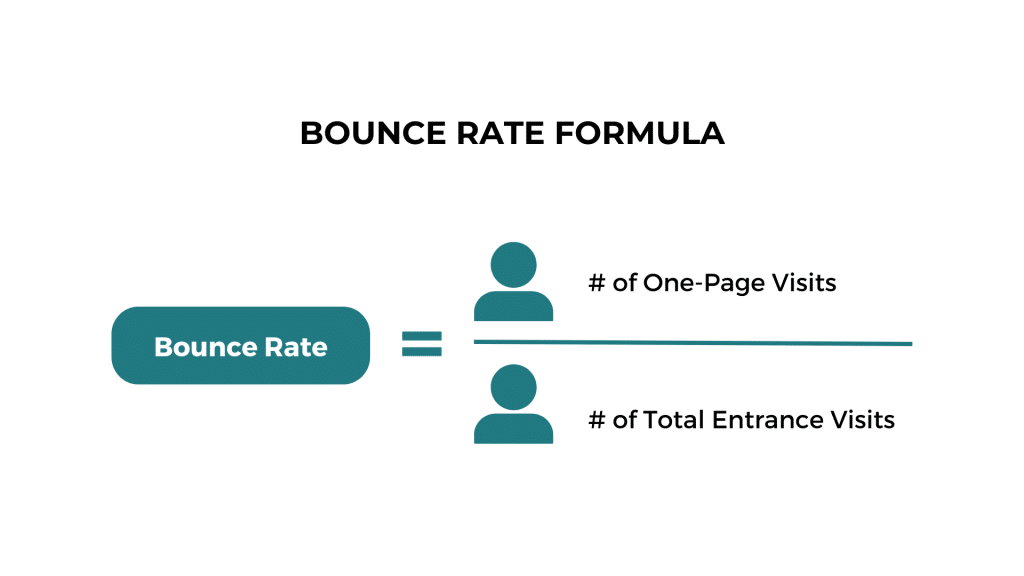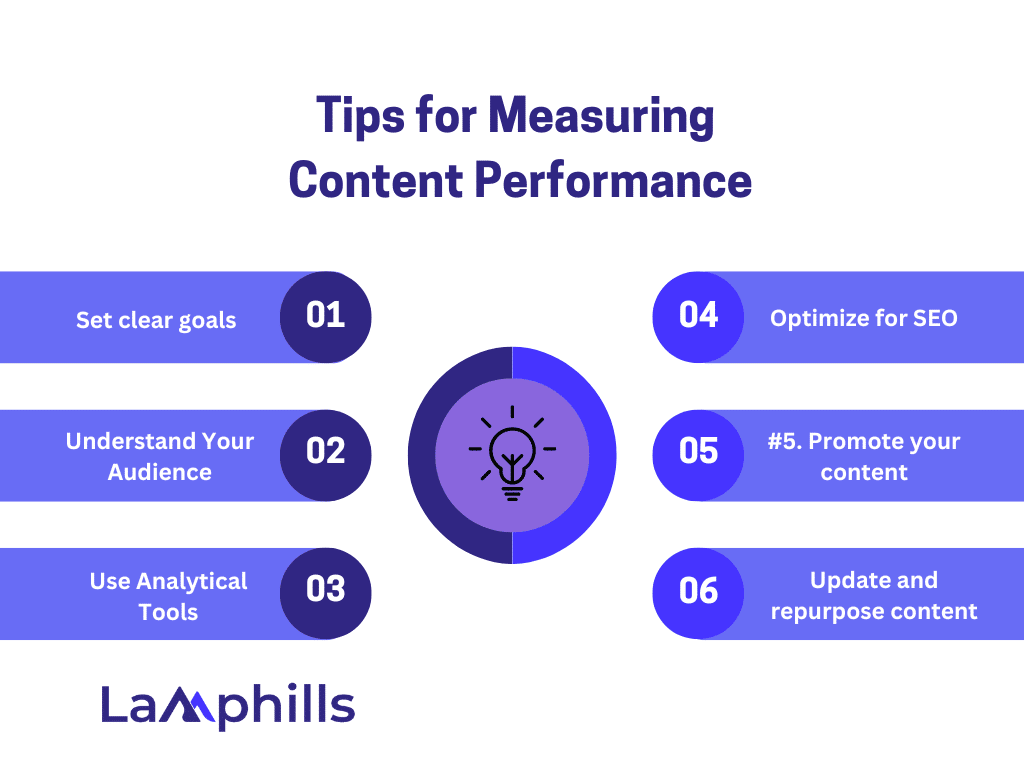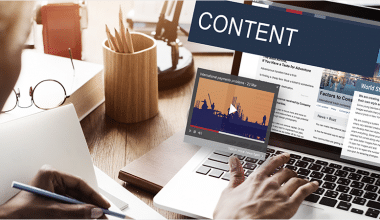The variety of metrics and tactics available when I first started focusing on content marketing overwhelmed me. The drive to increase content performance was overwhelming, especially given the amount of conflicting advice available online. However, after trial and error, I uncovered some simple tips that had a tremendous impact. Let me walk you through six straightforward strategies that, according to research and personal experience, can enhance the performance of your content.
What is Content Performance?
Content performance relates to the consequences of content and how they correspond with your overall marketing goals.
Your content’s performance should help you reach your marketing objectives, ensuring that any marketing spend is worthwhile.
The data and insights gleaned from content performance analysis can be used directly to create new content.
When done correctly, performance-driven content examines consumers’ demands, habits, and attitudes, promoting a more user-centric approach to content creation.
Key Takeaways
- Establish specific, measurable goals that align with your overall business objectives to enhance content performance effectively.
- Develop detailed buyer personas and tailor your content to resonate with your audience’s needs, preferences, and behaviors.
- Leverage tools like Google Analytics and SEMrush to track key metrics, identify trends, and make data-driven content optimization decisions.
- Implement SEO best practices, such as keyword optimization and internal linking, to increase your content’s visibility and organic traffic.
- Create a content promotion strategy using various channels and regularly update and repurpose existing content to maintain relevance and boost performance.
Why Does Content Performance Matter?
Content performance analysis guarantees that content meets marketing objectives and provides a high return on investment (ROI). It also aids in the measurement of your company’s progress.
When launching a content marketing campaign, you should set objectives such as increasing brand awareness, generating leads, and turning leads into purchasers. To optimize your content’s performance, compare its metrics to your marketing objectives. This is referred to as content intelligence by marketers, and it helps to keep your content strategy on track with your marketing objectives.
7 Metrics to Measure Your Content Performance
Track these seven metrics to get a complete picture of your online content’s performance.
#1. Website Traffic
This indicator provides a general understanding of how many people access your content. Google Analytics, for example, provides more information about your site traffic in their content performance report, such as:
- How many visitors are unique?
- How many visitors are returning?
- Where are the visitors from (country or region)?
- What browser does the traffic use?
Set traffic benchmarks and track this indicator to verify that people are discovering your content. If your traffic is poor, consider sharing the content on social media or third-party sites, sponsoring it in search results, and optimizing pages for search engines.
#2. Average time on page
Traffic alone is insufficient for a complete picture of your visitors. That’s why you should also consider the average time spent on the page.
This measure describes how engaging the content is. If someone reads a 2,000-word blog post in five minutes, it means they are skimming the content, and you may need to make it more engaging or shorter.
Depending on the analytic tool you use, scroll depth may also be seen. This indicator shows how far down visitors traveled before abandoning the page. If several readers abandon the page at the same scroll depth, it may be necessary to update and revamp that section to encourage visitors to continue scrolling.
#3. Bounce Rate

The bounce rate compares overall traffic to visitors who leave after seeing a single page. This indicator indicates what percentage of your overall visitors remain on your website and interact with your content.
You should aim for a bounce rate of 30 to 50%, but keep in mind that this varies by industry. If you achieve the desired bounce rate, your content actively engages visitors. If you have a high bounce rate, consider tweaking your content to be more engaging or targeting niche traffic to attract more relevant people who will stay on the page.
#4. Traffic Engagement
Engagement metrics show how relevant your content is. Relevant content is more likely to resonate with B2B readers and convert them into customers.
The following engagement metrics reflect content effectiveness:
- Likes and Shares
- Comments & Mentions
#5. Referring Pages
Where did the traffic originate from?
Investing in content discovery is an important component of content strategy. You want to make sure your niche audience discovers you. So, tracking referring pages in your content measurement to determine the most effective strategies for attracting B2B customers allows marketers to allocate the most time and resources.
For example, content that generates high organic search traffic demonstrates that the SEO approach is effective. However, if marketers aren’t getting much traffic from PPC advertisements, they should either improve their ads or prioritize organic traffic over sponsored ads.
#6. Pages Viewed
Where do visitors go once they read your content?
This measure assists advertisers in understanding the impact their content has on visitors. If the majority of visitors go to the pricing page after reading blog posts, marketers know they are effective as conversion content.
Knowing where users go after reading content helps marketers optimize the next pages to continue where the original content left off. This allows B2B buyers to continue going through the sales funnel.
#7. Conversion Rate

Every piece of content should include a call to action. The call to action specifies what follow-up action the reader should take. These activities ensure that visitors continue to engage with your content and brand. When visitors take action, you factor that into your conversion rate.
The most successful call-to-action collects lead information using lead generation forms. This way, interested visitors can receive nurturing emails that guide them through the sales funnel and guarantee they don’t forget about your business.
For example, if your goal is to produce leads, you may determine your conversion rate based on how many prospects complete the form at the bottom of your content.
Content rarely leads to a straight sale (though exceptions exist, particularly for conversion content such as pricing pages). Instead, most content tackles pain points for leads in the middle of the funnel. The sales staff then converts leads into B2B purchasers based on their sustained interest, resulting in an indirect sale that originated with the content.
Read Also: Crafting CTAs That Convert: Perfecting the Press Release CTA for Explosive Growth
What Content Metrics Can Be Measured for Performance?
A wide range of content categories can be tracked and measured, including:
- Web pages (including campaign landing pages)
- Blogs
- Videos
- Infographics
- Social media posts.
- Marketing emails
The actual metrics used for measurement will differ based on the type of content and how it is shared. In general, any data or discoveries acquired from studying how a piece of content is performing should, to the greatest extent feasible, be used to inform future content creation initiatives.
For example, the results of evaluating the performance of a content item may comprise any or all of the following:
- Making tips to optimize existing content
- Identifying new areas to invest in for future content.
- Validating which content works well
- Earmarking content that can be erased or archived
The Best Way to Choose Content KPIs
You can’t reliably measure content performance without first establishing the right KPIs.
That’s why it’s critical to understand which performance indicators correspond to specific content types. Website traffic, new vs. returning visitors, bounce rate, time on page, unique page views, page views per visit, referral sources, and regional trends, for example, could be measured for blog posts and articles.
However, for a pay-per-click (PPC) campaign, KPIs would be different. They would consist of cost per click (CPC), click-through rates (CTRs), conversion rate, cost per conversion (CPC), return on ad spend, and so on.
So, for each piece of content you create, you must decide on the appropriate metrics to track.
It might also be beneficial to go backward from the goals you establish, outlining each stage in the customer journey toward that goal. You’ll notice that each stage corresponds to a metric, such as website traffic, engagement, or revenue.
Read Also: A Beginner’s Guide to Content Marketing KPIs and Metrics
Measuring Content Performance
Understanding how your content performs is critical for honing your strategy and meeting your marketing objectives. Analyzing certain metrics might help you understand what’s working and what needs to be improved. To help you get started, we’ve put together a complete Content Performance Metrics Checklist. This checklist will walk you through the most important metrics to track, ensuring that your content is effectively increasing traffic, engaging your audience, and converting leads.
Content Performance Metrics Checklist
Site Traffic:
- Types of visitors: unique, returning, and traffic sources.
Engagement:
Key metrics include average time on page, bounce rate, and scroll depth.
Conversions:
- Conversion Rate
- Leads generated
Social media metrics:
- Social media activity, including likes, shares, comments, and referral traffic.
Content Effectiveness:
- Top-performing pages
- Exit pages
- Page count per session
Using this checklist, you can assess your content’s impact and make data-driven decisions to improve its performance. Regularly tracking these metrics can help you link your content strategy with your marketing goals, ensuring that every piece of content contributes to your overall success.
Tips for Measuring Content Performance

According to the Content Marketing Institute, 72% of marketers believe that having a good content strategy is crucial to their success. However, only 27% of companies effectively track the ROI of their content efforts. This disparity emphasizes the importance of basic and actionable content performance tips.
#1. Set clear goals
One of the most important steps in increasing content performance is to establish clear, measurable goals. These goals should be consistent with your overall business objectives.
Companies with well-defined goals are 376% more likely to report success. When I began defining specific targets for each piece of content, such as increasing newsletter sign-ups by 20% or increasing social shares by 50%, I observed a significant improvement in its effectiveness.
Solution: To create your content goals, apply the SMART criteria (Specific, Measurable, Achievable, Relevant, and Time-bound).
#2. Understand Your Audience
Understanding your audience’s needs, preferences, and behaviors is critical. With this understanding, you can develop content that resonates and engages successfully.
According to HubSpot, tailored content outperforms non-personalized content by 42%.
I once organized a survey to better understand my audience’s interests. The insights acquired allowed me to adapt my content, resulting in improved engagement and conversion rates.
Solution: Develop detailed buyer personas that represent your audience segments. Use these personas to help guide your content development process.
#3. Use Analytical Tools
Analytics tools can provide vital information about how your content is performing. Google Analytics, SEMrush, and HubSpot are all tools that may help you track key metrics like page views, bounce rates, and conversion rates.
Businesses that employ analytics tools to track their marketing activities see a 10–20% improvement in ROI.
By routinely assessing the performance of my content using Google Analytics, I was able to learn which topics and formats were most popular with my audience, allowing me to efficiently adjust my content strategy.
Solution: Review your analytics data regularly to spot trends and make data-driven content optimization decisions.
#4. Optimize for SEO
Search engine optimization (SEO) is critical for making your content visible. Effective SEO tactics can dramatically improve your content’s visibility and performance.
BrightEdge claims that organic search accounts for 53% of all website traffic. Initially, I underestimated the importance of SEO. When I began applying SEO-recommended practices like keyword optimization and internal linking, I noticed a significant rise in organic traffic.
Solution: Conduct keyword research, optimize your content for relevant keywords, and make sure your site’s technical SEO is solid.
#5. Promote your content
Creating outstanding content is only half the battle; good promotion is just as crucial. Use a variety of outlets to increase the reach of your content.
According to the Content Marketing Institute, 87% of marketers use social media to share their content.
I discovered that distributing my content on many platforms, such as social media, email newsletters, and guest blogs, really enhanced its visibility and engagement.
Solution: Create a content promotion strategy that incorporates social media, email marketing, and partnerships with influencers or other brands.
#6. Update and repurpose content
Keeping your content fresh and relevant is critical to maintaining its performance. Updating current content and reusing it in new formats can increase its longevity and reach.
HubSpot claims that upgrading existing blog posts with new content and photos can boost organic traffic by up to 106%.
I began examining previous blog posts to incorporate updated information and new pictures. This method not only helped my SEO but also increased visitors to my website.
Conduct regular audits of your content library to uncover items that may be updated or repurposed into other media, such as videos, infographics, or podcasts.
Real-Life Example: Buffer
Buffer, a social media management platform, is a prime example of effective content marketing. They constantly provide high-quality, data-driven content that connects with their target audience.
Buffer’s blog receives over 1 million visitors every month, which generates considerable traffic and leads for the company.
Inspired by Buffer, I started focusing on providing in-depth, relevant content backed up by research and real-world examples. This strategy substantially improved the performance of my content.
Conclusion
Improving your content’s performance does not have to be complicated. Setting clear goals, understanding your audience, employing analytics, optimizing for SEO, promoting your content, and updating it regularly can all help you achieve big results. These tips have helped me transform my content strategy, and I’m convinced they will do the same for you. What specific content performance difficulties do you have, and how may these tips help you overcome them?
Related Articles
- The Ultimate Guide to Building a High-Performance Content Creation Workflow
- PR KPIs: Top 10 PR KPIs Every Comms Pro Needs to Track in 2024
- How To Measure Brand Awareness: KPIs To Look Out For
- Top 51 Social Listening Agencies & All You Need
- How To Calculate Click Through Rate: The ‘Weird’ Industry Trick That Skyrocketed My CTR 473%





